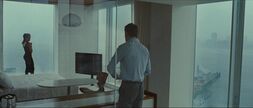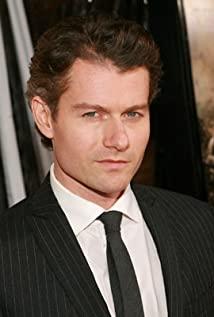cause is the changes in the current film industry: more and more artists who originally engaged in Visual Art and Video Art have begun to enter the film industry system. In the past few months when I came to Montreal, what I heard was that more and more NFB project funds in Canada will be awarded to film projects related to visual arts and multimedia, and they have begun to squeeze the space of traditional independent film production. YAN said Steve McQueen is a typical example. He first appeared in the public eye as a well-known Fine Artist in the UK, and won many art awards before he moved into the production of feature films. Therefore, the two films Hunger and Shame will have external formal treatments that are very different from those of traditional filmmakers.
When YAN said this, I began to think carefully about why I disliked SHAME so much, and gradually straightened out the logic:
1. In fact, its bourgeois perspective made me very impatient. There is no problem with Bourgeois itself. Rohmer has been making bourgeois-themed movies all his life, one by one is more exciting, but it is worth noting that he has never looked at these themes from the perspective of bourgeois. He has a particularly divorced, full of hidden desires of human nature, but a morally dialectical and ambiguous, God-like perspective on all the characters he creates. He has a clear and rational understanding of the stories and characters he wants to narrate: that is, the behavior, language, and entangled contradictions of people in a certain social class have the characteristics of that class in form, but in essence they are in the spiritual level of human nature. The embodiment of the eternal contradiction, it is the understanding of this contradiction, we have those wonderful moments in "Klar's Knee", "Female Collector" and "Summer's Story". Bourgeois is actually an effective shell, which amplifies the contradictions of human nature itself, and becomes a mirror that can reflect the spiritual essence behind all human bodies.
I think the problem with SHAME lies here. He has found a point, or a phenomenon, but before he can deeply understand the essence of this phenomenon rationally, before he finds the moment that is long enough to move the core of the film. Before his spiritual lever, he used his visual artist's instinct to first construct a form and external details of the film. The inner core has not yet formed and developed richly or spurred enough depth, it has been sealed and frozen by these forms he can think of. So this core itself can only represent the state, mentality and spiritual essence of Steve McQueen when he touched and briefly forged it, that is, a bourgeois state-not only the characters in the film, but also the creator of the film. This is the reason why this film is so exaggerated in my opinion. No matter how fancy or difficult it is in external form, it is just a mirror effect. The creator and the character stand on both ends of the mirror and examine each other.
2. YAN mentioned that Shame is actually about a word Loneliness. It suddenly occurred to me that most of the movies are actually based on one word or a few words as the core and construct the whole. For example, Drive is talking about "chivalrous tenderness", Tinker Tailor Soldier Spy intends to outline "lost", Melancholia wants to express "destroyed arrogance" and so on. In the creative core, this word as the starting point is the subtext of a film, which is a must for most films. Only around the construction and development of this subtext can the external form and surface text be established. It is the subtext that leads the development of the latter two, not the other way around.
In fact, the level of difference between movies, at the creative level, is very important to the creator’s understanding of the word found. What level of rational thinking he has, what kind of understanding he has about the world and social operating mechanisms, and what values he holds, determine the depth of the core that this word represents. In this case, the form cannot essentially enhance the expression level of the core.
In other words, Shame had a double mistake that Visual Artist made when entering the field of feature film creation: one. He hastily decided the core and subtext of the film almost without in-depth consideration-to some extent this is determined by the cognitive level of the creator himself. two. He believes in the diversification of forms and grandstanding (this is the goal that an artist desperately achieves in the field of contemporary Fine Art) can make up for the value of film works under the premise of weak rational core-this is what we are in the film The long shots I saw here—singing, running, eating, and even sitting on the couch—are intended to achieve the functions. But in fact, it is these formal methods that are too out of place and fragment the inherently empty core. A noteworthy phenomenon is that the protagonist of the film, his mental state and environment, have not changed up and down from beginning to end. We watched a display of the state of a person stacked by form and technical means, and there was no one in two hours. Go deep into any kernel, how it starts, and how it ends. From the perspective of the play, this is a very low-level mistake, and it is also a taboo in constructing a film with the subtext as the beginning and core.
3. Are all film works constructed like this through vocabulary and subtext? In fact, it is not true. I thought of Apichatpong again. It should be said that I am not a fan of his. But in retrospect, I have seen his works and felt that as an artist who entered the film industry from the field of Fine Art, he found a much more correct way: From the beginning, the existence of the latent text as the kernel was removed. In other words, in the initial stage of creation, we no longer need the word, and directly enter a stage of situational restoration. The perceptual feeling in the creator's mind becomes the core. It skips the paraphrase and translation of the text, and directly transforms into the character's behavior, scene shaping, sound creation and picture editing. Using formal elements directly becomes the carrier of feeling, without the need for the process of summarizing and re-presenting the central idea. I have seen the first film of Apichatpong. It is a short film and one of my favorites. A funeral held on a fast-moving boat. In front of the turbulent river and fast-reversed scenery on both sides of the bank, people peacefully hold flowers and sprinkle them into the water. , The contrast between tranquility and rapid movement directly restored the situation of a creator in my mind. I have no vocabulary to describe its core. Because it has no text kernel in nature, the latter is replaced by sensory transmission.
In conclusion, if you want to completely liberate form and let it serve the creator’s sensory experience, you must remove the core of the text at the initial stage and establish a direct relationship between feeling and form. Of course, in the era of commercial films, this takes great risks to deal with the audience's reactions and feelings. At the same time, this also requires creators to have extremely high personal talents and expressive skills. In many cases, it can be said that the identities of the screenwriter and the director of a movie created in this way are almost inseparable. Otherwise, it is another situation. You can only honestly find a core content that you want to express, and at the same time position it with the creator’s sufficient knowledge structure and values, chew it carefully, disassemble and understand it, and use professional It can also be said that it is a ready-made drama theoretical structure, and finally a suitable form is found to carry it. That is: thinking rationally and expressing emotionally.
And this process of smooth and in-depth rational thinking to develop an appropriate form is actually the weakness of many contemporary Fine Artists.
View more about Shame reviews











